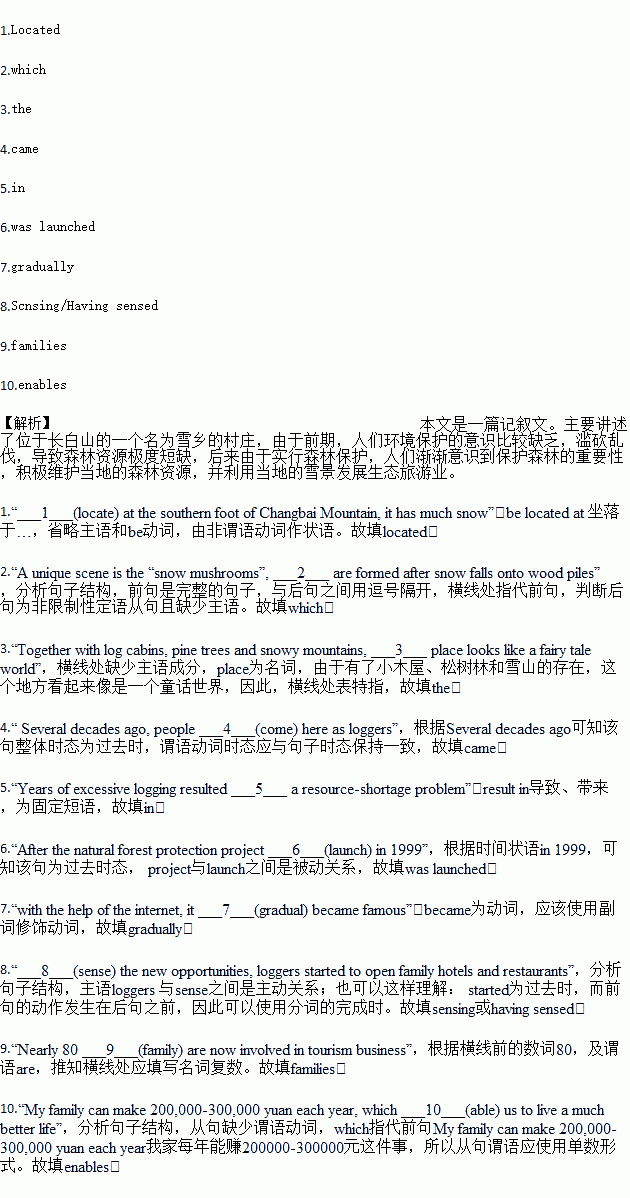题目内容
Xuexiang Village, formerly known as a forestry farm, has been transformed into a booming tourist resort. 1.(locate) at the southern foot of Changbai Mountain, it has much snow. The snow here starts falling in October and begins to melt in April. A unique scene is the “snow mushrooms”, 2. are formed after snow falls onto wood piles. Together with log cabins, pine trees and snowy mountains, 3. place looks like a fairy tale world. Several decades ago, people 4.(come) here as loggers. Years of excessive logging resulted 5. a resource-shortage problem. After the natural forest protection project 6.(launch) in 1999, the forestry farm stopped logging and started to make good use of the snow to develop the tourism industry. Amateur photographers first promoted the beautiful scenery, then, with the help of the internet, it 7.(gradual) became famous and tourists began coming. 8.(sense) the new opportunities, loggers started to open family hotels and restaurants. Nearly 80 9.(family) are now involved in tourism business. “My family can make 200,000-300,000 yuan each year, which 10.(able) us to live a much better life”, said Fan, a used-to-be logger.
 学而优衔接教材南京大学出版社系列答案
学而优衔接教材南京大学出版社系列答案 小学课堂作业系列答案
小学课堂作业系列答案 金博士一点全通系列答案
金博士一点全通系列答案
